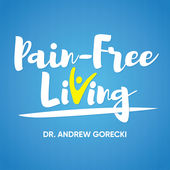
Circadian Rhythm: How Time of Day Affects Healing, Inflammation, and Pain
Every moment of every twenty-four hours our bodies operate according to an internal clock known as the circadian rhythm. This intricate system governs various physiological processes, including metabolism, sleep-wake cycles, hormone production, and even the way our bodies respond to injury and pain. Understanding the connection between time of day and the body's healing capacity, inflammation levels, and pain perception can shed light on optimizing healthcare strategies. In this article, we delve into how the time of day affects healing, inflammation, and pain levels.
The Circadian Rhythm and Healing
The circadian rhythm acts as a regulatory mechanism for numerous cellular processes, including tissue repair and regeneration. Research suggests that healing rates vary depending on the time of day an injury occurs or a surgical procedure is performed. A study published in Science Translational Medicine found that wounds sustained during the day healed around twice as fast as those sustained at night. The researchers attributed this difference to the higher abundance of fibroblasts, the cells responsible for synthesizing collagen and promoting wound closure, during the daytime.
Additionally, several genes and signaling pathways associated with healing exhibit circadian oscillations. For example, transforming growth factor-beta (TGF-β) is a crucial molecule involved in tissue repair. Its production and signaling follow a rhythmic pattern, with higher levels during the day. This circadian regulation ensures optimal healing processes, emphasizing the importance of timing in wound management and surgical interventions.
Inflammation Levels and the Circadian Rhythm
Inflammation serves as the body's defense mechanism against injury, infection, or other harmful stimuli. It is a complex response involving the activation of immune cells and the release of inflammatory mediators. Studies have revealed that the circadian rhythm profoundly influences the intensity and duration of inflammatory responses.
Research published in the Proceedings of the National Academy of Sciences highlighted the role of the molecular clock in immune cells. The study demonstrated that immune cells, such as macrophages and T cells, exhibit time-dependent variations in their responsiveness to inflammatory stimuli. These findings suggest that the immune system displays a higher capacity to combat infections and control inflammation during the daytime, while it may be less effective during the nighttime.
Pain Perception and the Time of Day
Pain, whether acute or chronic, is a complex sensory experience that can vary in intensity throughout the day. The circadian rhythm plays a significant role in modulating pain perception. The body's pain threshold and tolerance can be influenced by factors such as hormone levels, neuronal activity, and psychological factors, all of which fluctuate according to the circadian rhythm.
Research has indicated that pain sensitivity tends to be highest in the early morning hours, with a gradual decline throughout the day. This phenomenon is believed to be associated with diurnal variations in endogenous pain modulatory systems, including the release of natural pain-relieving substances like endorphins.
Clinical Implications
Understanding the relationship between the circadian rhythm and healing, inflammation, and pain perception has crucial implications for healthcare practices. Medical interventions, such as surgeries or wound management, may be timed to optimize healing potential. Furthermore, the administration of anti-inflammatory medications or immune-modulating therapies may be strategically planned to align with the body's heightened responsiveness during specific times of the day.
Chronotherapy, a branch of medicine that studies the optimal timing of treatments, can be applied to pain management. Tailoring medication dosages based on circadian rhythms could improve pain relief while minimizing side effects. Additionally, therapies targeting the circadian clock and its associated molecular pathways may emerge as promising avenues for promoting healing and reducing inflammation.
Conclusion
The circadian rhythm serves as a crucial regulator of healing and inflammation and influences our perception of pain. Understanding more about this rhythm and its effects on our bodies may lead to new therapies that can significantly aid healing and pain relief.
Check out our many resources on body pain and how to eliminate it: Courses & Books | Superior Physical Therapy (thesuperiortherapy.com)
Here's a scientific article on Circadian Rhythm and Pain: Circadian rhythms and pain - ScienceDirect



